
A hearse is a large vehicle, originally a horse carriage but later with the introduction of motor vehicles, a car, used to carry the body of a deceased person in a coffin at a funeral, wake, or memorial service. They range from deliberately anonymous vehicles to heavily decorated vehicles.

Burial, also known as interment or inhumation, is a method of final disposition whereby a dead body is placed into the ground, sometimes with objects. This is usually accomplished by excavating a pit or trench, placing the deceased and objects in it, and covering it over. A funeral is a ceremony that accompanies the final disposition. Evidence suggests that some archaic and early modern humans buried their dead. Burial is often seen as indicating respect for the dead. It has been used to prevent the odor of decay, to give family members closure and prevent them from witnessing the decomposition of their loved ones, and in many cultures it has been seen as a necessary step for the deceased to enter the afterlife or to give back to the cycle of life.
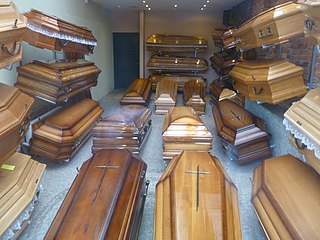
A coffin is a funerary box used for viewing or keeping a corpse, either for burial or cremation.

London Necropolis railway station was the terminus at Waterloo, London, of the London Necropolis Railway. The London Necropolis Railway was opened in 1854 as a reaction to severe overcrowding in London's existing graveyards and cemeteries. It aimed to use the recently developed technology of the railway to move as many burials as possible to the newly built Brookwood Cemetery in Brookwood, Surrey. This location was within easy travelling distance of London, but distant enough for the dead not to pose any risk to public hygiene. There were two locations for the station; the first was in operation from 1854 to 1902, the second from 1902 to 1941.

On June 5, 2004, Ronald Reagan, the 40th president of the United States, died after having Alzheimer's disease for nearly a decade. Reagan was the first former U.S. president to die in 10 years since Richard Nixon in 1994. At the age of 93 years, 120 days, Reagan was the longest-lived U.S. president in history at the time of his death, a record which was surpassed by Gerald Ford on November 12, 2006. His seven-day state funeral followed. After Reagan's death, his body was taken from his Bel Air home to the Kingsley and Gates Funeral Home in Santa Monica, California, to prepare the body for burial. On June 7, Reagan's casket was transported by hearse and displayed at the Ronald Reagan Presidential Library in Simi Valley, California, then flown to Washington, D.C., on June 9 for a service, public viewing and tributes at the U.S. Capitol.

In death customs, a viewing is the time that family and friends come to see the deceased before the funeral, once the body has been prepared by a funeral home. It is generally recommended that a body first be embalmed to create the best possible presentation of the deceased. A viewing may take place at the funeral parlor, in a family home or at a place of worship, such as a church. Some cultures, such as the Māori of New Zealand, often take the body to the marae or tribal community hall.

Natural burial is the interment of the body of a dead person in the soil in a manner that does not inhibit decomposition but allows the body to be naturally recycled. It is an alternative to typical contemporary Western burial methods and modern funerary customs.

In the United States, state funerals are the official funerary rites conducted by the federal government in the nation's capital, Washington, D.C., that are offered to a sitting or former president, a president-elect, high government officials and other civilians who have rendered distinguished service to the nation. Administered by the Military District of Washington (MDW), a command unit of the Joint Force Headquarters National Capital Region, state funerals are greatly influenced by protocol, steeped in tradition, and rich in history. However, the overall planning as well as the decision to hold a state funeral, is largely determined by a president and their family.
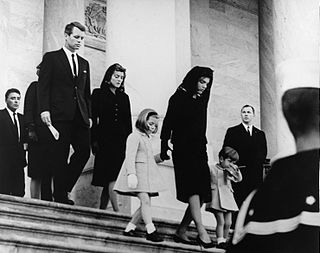
The state funeral of U.S. President John F. Kennedy took place in Washington, D.C., during the three days that followed his assassination on Friday, November 22, 1963, in Dallas, Texas.
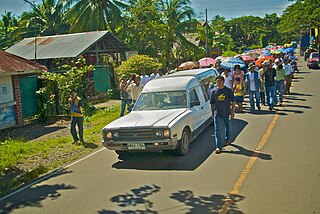
During the Pre-Hispanic period the early Filipinos believed in a concept of life after death. This belief, which stemmed from indigenous ancestral veneration and was strengthened by strong family and community relations within tribes, prompted the Filipinos to create burial customs to honor the dead through prayers and rituals. Due to different cultures from various regions of the Philippines, many different burial practices have emerged. For example, the Manobos buried their dead in trees, the Ifugaos seated the corpse on a chari before it was brought to a cave and buried elsewhere. The most common forms of traditional burials are supine pits, earthenware jars, and log coffins, and have been a topic of interest among Philippine archaeologists since the early 20th century.

In the United Kingdom state funerals are usually reserved for monarchs. The most recent was the state funeral of Queen Elizabeth II on 19 September 2022.

William France Jr. was a cabinetmaker and upholsterer in 18th century London and a member of the well known France family who held the Royal Warrant for over half a century. He was the nephew of William France Sr. and younger brother of Edward France, the former being cabinetmaker to the Royal Household. He was born in 1759 and died in 1838 in Boulogne, France. He was made a Freeman of Lancaster in 1785–86.
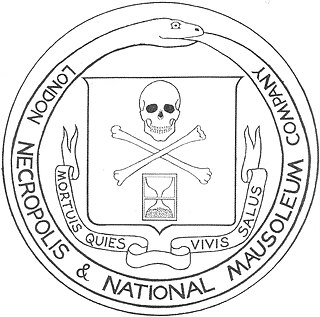
The London Necropolis Railway was a railway line opened in November 1854 by the London Necropolis Company (LNC), to carry corpses and mourners between London and the LNC's newly opened Brookwood Cemetery, 23 miles (37 km) southwest of London in Brookwood, Surrey. At the time the largest cemetery in the world, Brookwood Cemetery was designed to be large enough to accommodate all the deaths in London for centuries to come, and the LNC hoped to gain a monopoly on London's burial industry. The cemetery had intentionally been built far enough from London so as never to be affected by urban growth and was dependent on the recently invented railway to connect it to the city.
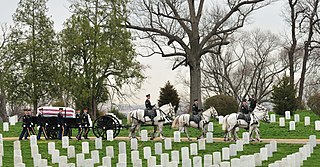
A military funeral in the United States is a memorial or burial rite conducted by the United States Armed Forces for a Soldier, Marine, Sailor, Airman, Guardian or Coast Guardsman who died in battle, a veteran, or other prominent military figures or a president. A military funeral may feature guards of honor, the firing of volley shots as a salute, drumming and other military elements, with a flag draping over the coffin.
Central England Co-operative, trading as Central Co-op, is a regional consumer co-operative in the United Kingdom, based in Lichfield and which trades from over 400 sites across the English Midlands and East Anglia. The business is owned and democratically controlled by its members who can stand for election to the board and who also share in the society's profits. A proportion of the profits of the business are also invested in local community groups through its community dividend grants programme and its more than 60 member classes.
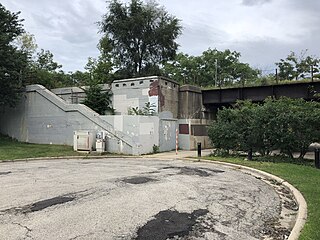
Calvary was a commuter railroad station on the Chicago and North Western Railway's Milwaukee Division, today's Union Pacific North Line. The station was located at Mulford Street and Chicago Avenue, in Evanston, Illinois.

On November 30, 2018, George H. W. Bush, the 41st president of the United States, died from vascular Parkinson's disease at his home in Houston, Texas. Bush was the first former U.S. president to die in nearly 12 years since Gerald Ford in late 2006. At the age of 94 years, 171 days, Bush was the longest-lived U.S. president in history at the time of his death, a record which was surpassed by Jimmy Carter on March 22, 2019; both were born in the same year (1924).
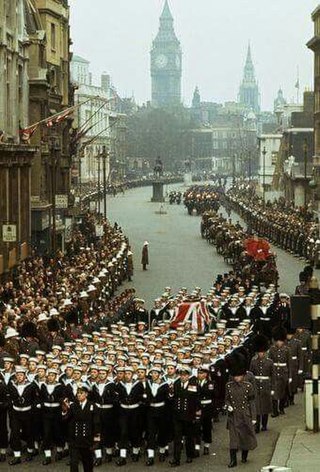
Sir Winston Churchill, the British statesman, soldier, and writer who served as Prime Minister of the United Kingdom during the Second World War, died on 24 January 1965, aged 90. His was the first state funeral in the United Kingdom for a non-member of the Royal Family since Edward Carson's in 1935. It was the last state funeral until Queen Elizabeth II's on 19 September 2022. The official funeral lasted for four days. Planning for the funeral, known as Operation Hope Not, began after Churchill's stroke in 1953 while in his second term as prime minister. After several revisions due to Churchill's continued survival, the plan was issued on 26 January 1965, two days after his death.
Pandit Jawaharlal Nehru, the first Prime Minister of India, died in the afternoon of 27 May 1964, at the age of 75, of a heart attack.
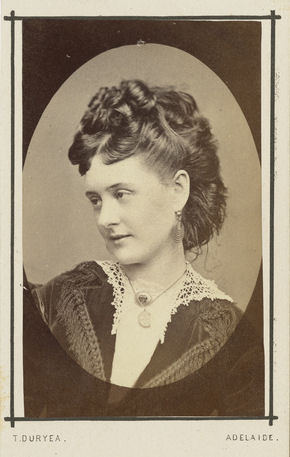
Hattie Shepparde was an Australian actress who during her short career gained a growing reputation in her native land where she was highly regarded for ‘her intelligence, her ease, the grace of her manner and her thorough devotion to her art’. She died aged 28 after childbirth.


















